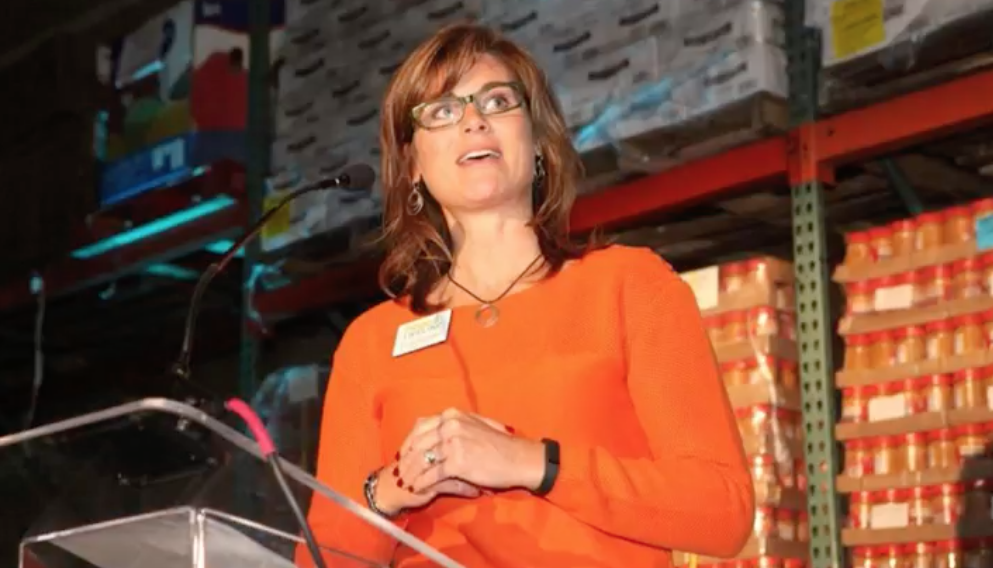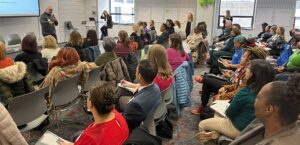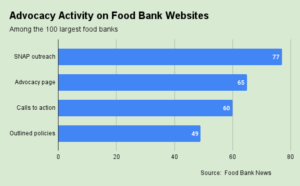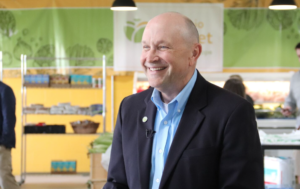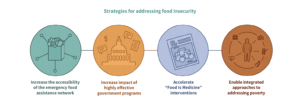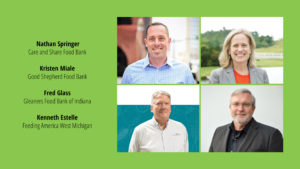Linda Nageotte may have been named President and Chief Operating Officer of Feeding America last July, but in practice she is more like Convener in Chief.
One of her mandates is to develop a strategic framework for the Feeding America network of 200 food banks and additional affiliated food banks, a process that involves hosting hundreds of people at dozens of meetings in locations all across the country. One reason so many people are involved is that Feeding America is taking care to gather lots of input from neighbors – the people who actually utilize the hunger relief system.
“We’re really working hard to listen at every level, and most importantly, to listen to our neighbors,” said Nageotte, who came to Feeding America after 25 years as CEO at Seattle-based Food Lifeline.
Nageotte is clear that she’s the orchestrator, not the doer, in these activities. A lot of the action is happening through an advisory committee known as the National Council that is “the governing body of our network,” Nageotte said. “So, it’s definitely not me.”
The National Council, consisting of about 15 people including elected food bank and other representatives from every region of the nation, as well as a few representatives from the national Feeding America office, meets monthly and has been discussing the strategic framework since at least early 2023.
Initial conversations were around visions and values, and then came those meetings featuring multitudes of neighbor voices to identify strategic priorities, which will continue on into the summer. The Council will then explore specific actions to undertake to support those priorities. “The intention will be to have a draft of this framework complete by the fall to present at our fall national conference,” Nageotte said.
Another point to be clear on: the outcome will be a strategic framework, not an actual strategic plan. Feeding America will use the framework to “deeply inform” its own strategic planning process, which is coming up, Nageotte said. Network members will be able to use it as a roadmap as well, though they are not obligated to do so. “Each member in this network has the opportunity to use any or all elements of the work in their own strategic planning processes,” Nageotte said.
What are the messages that are bubbling up from the convenings with neighbors? For one, neighbors would like food banks to help address the underlying root causes that caused them to encounter food insecurity in the first place. They’d also like food banks to improve the experience of accessing food “to ensure that they feel welcomed and affirmed and that the foods they find there resonate with them,” Nageotte said.
Neighbor input may also steer Feeding America’s advocacy efforts by helping to identify the safety-net programs that make the biggest difference. And from partner agencies, Feeding America is hearing that their sustainability “is something that we have the opportunity to positively impact,” she noted.
In the midst of all the strategic planning, Feeding America also expects to be heavily engaged in getting food. The network is on course to source more food – whether through government programs, donations, purchases or food rescue – than it ever has in its history, almost seven billion pounds, Nageotte said. “That is an extraordinary amount of food, more than we’ve ever been able to provide. Yet, it’s not enough. We are not meeting the need,” she said, underscoring the urgency of also focusing on root-cause work to end hunger.
With Covid funding and donations in decline, food banks are spending less to purchase food, Nageotte said, but are benefitting from a “pretty significant bump” in donations from food manufacturers. She plans to ensure Feeding America food banks do a better job of collaborating, so food can be shared from places where it is plentiful to where it’s not.
She also sees a “significant opportunity” for food banks to get involved in the Food is Medicine movement, as insurance providers become increasingly willing to pay for healthy food on behalf of their patients. “We believe that this is a programmatic opportunity everywhere and that it’s vitally important for us to understand what the right programs and approaches are that we could be putting into place,” she said.
Having been involved in hunger relief for more than 30 years, Nageotte believes she is in the right place at the right time as a leader at Feeding America. “This mission is my life’s work,” she said. During her time as Food Lifeline’s CEO, she served on several Feeding America committees and task forces, helped to redesign the National Council, and even helped to rewrite the contract between Feeding America and member food banks three different times. “I’ve done it because I care deeply and believe deeply in our collective capacity,” she said. “I just feel so passionate about the work that we do.” – Chris Costanzo
Like what you’re reading?
Support Food Bank News
